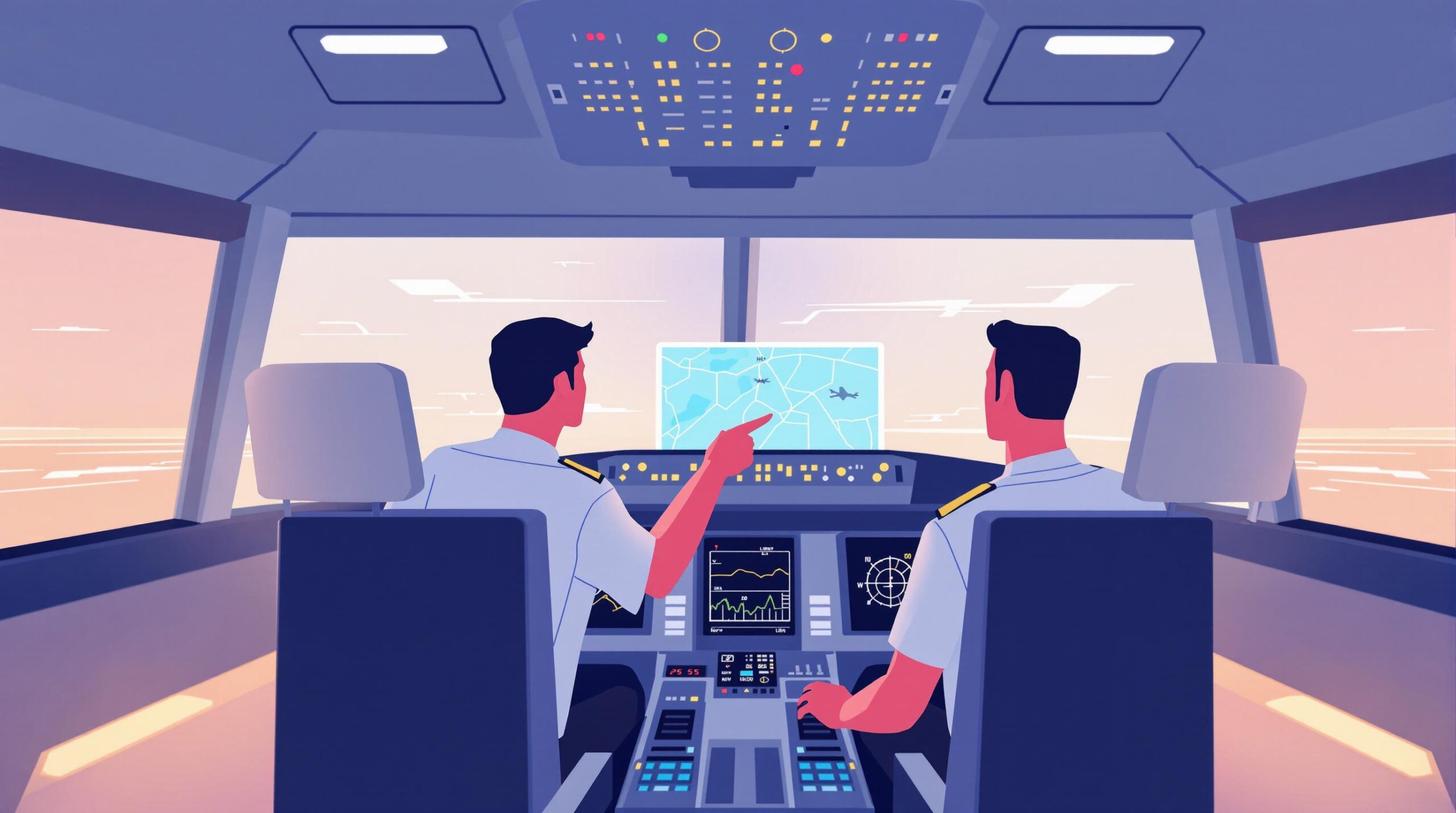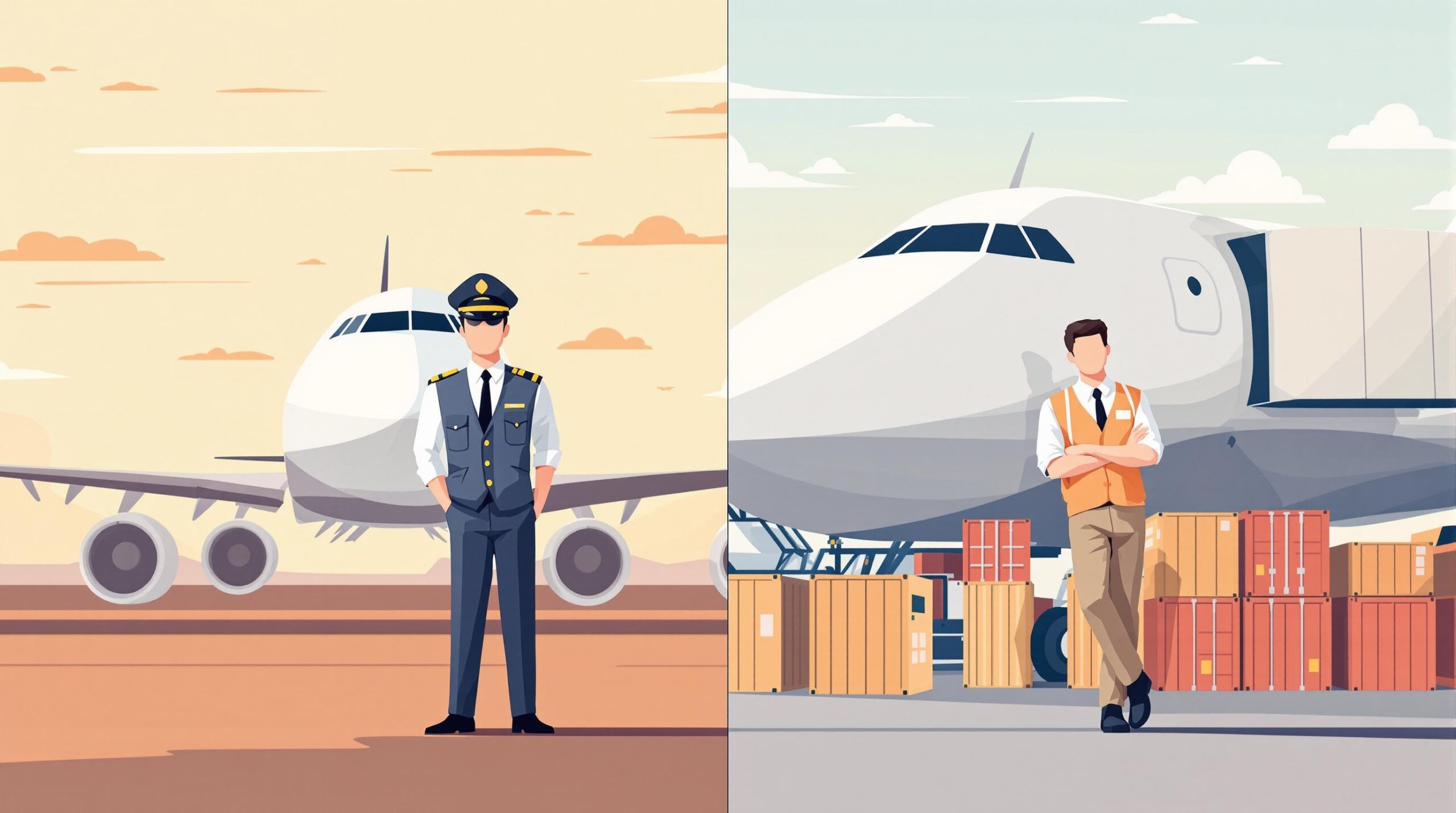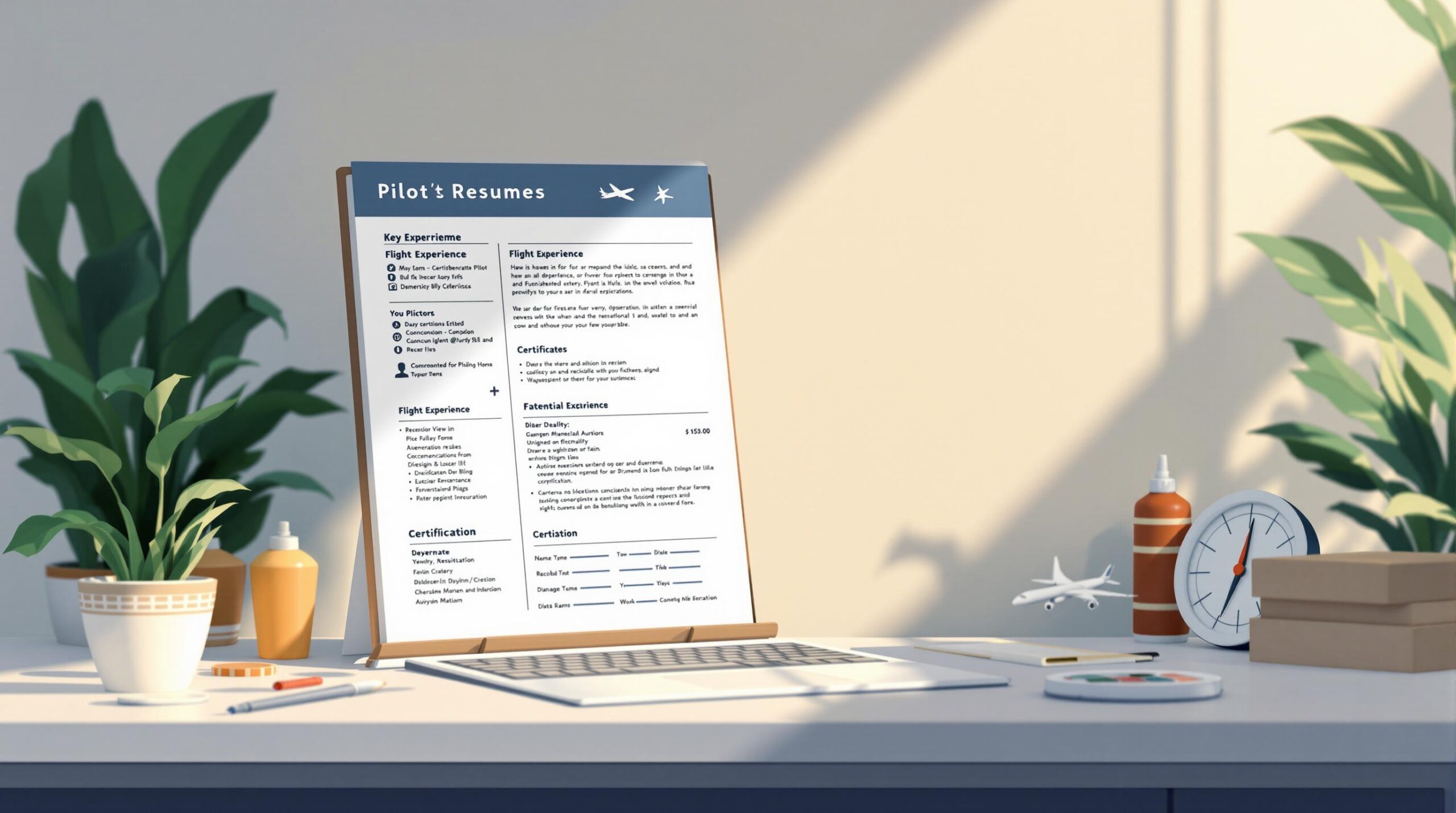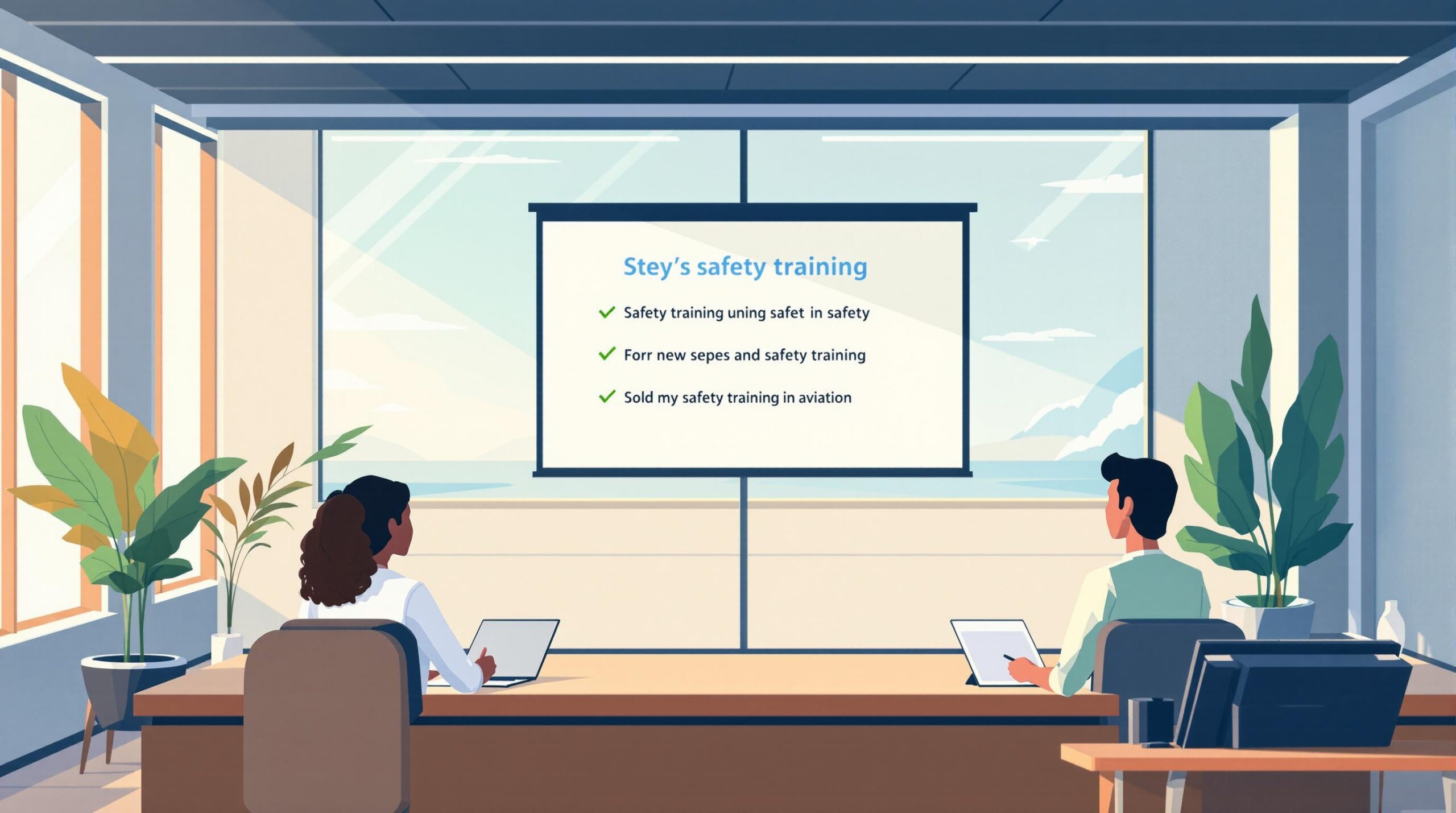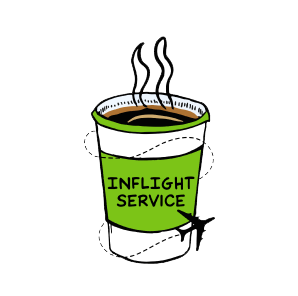Teamwork is a must-have skill for pilots. Airlines test your ability to collaborate, communicate, and make decisions under pressure during interviews. Here’s what you need to know:
- Why It Matters: Teamwork impacts flight safety and efficiency. Airlines assess how well you work with crew members in critical situations.
- What to Expect: Scenario-based questions focusing on communication, leadership, conflict resolution, and decision-making.
- How to Prepare: Use the STAR method (Situation, Task, Action, Result) to structure your answers. Practice real-life examples of handling crew dynamics, emergencies, and technical issues.
- Key Focus Areas:
- Clear communication during high-pressure situations.
- Collaborative decision-making in emergencies.
- Handling conflicts professionally and maintaining safety.
- Coordinating with multiple teams effectively.
Tip: Prepare examples that highlight your teamwork skills and align with Crew Resource Management (CRM) principles. Use tools like Pilot Pathfinder for practice.
This guide dives into 10 common teamwork scenarios and how to tackle them in pilot interviews. Let’s get started.
Crew Resource Management (CRM) for Airline Interviews
Why Teamwork Matters in Pilot Interviews
Teamwork is a cornerstone of aviation safety, directly influencing operations and passenger well-being. Airlines place a strong focus on teamwork during pilot interviews because effective crew coordination can determine the outcome of a flight.
Crew Resource Management (CRM) emphasizes how essential teamwork is for maintaining safety in aviation [1]. Interviewers typically assess three key abilities:
- Clear Communication: The ability to deliver information precisely and listen actively, even in high-pressure situations.
- Collaborative Decision-Making: Working with the crew to quickly and effectively resolve challenges.
- Adaptive Leadership: Taking on the right role depending on the situation, whether leading or supporting.
Scenario-based questions are often used to evaluate these skills. For example, when discussing a weather diversion, interviewers may assess how a pilot balances being assertive while remaining open to feedback from other crew members.
The importance of teamwork becomes even clearer in critical scenarios. Here’s how teamwork components align with flight operations and interview evaluations:
| Component | Impact on Flight Operations | Interview Focus |
|---|---|---|
| Leadership Skills | Provides direction during crises | Decision-making under pressure |
| Conflict Resolution | Resolves disputes efficiently | Handling interpersonal challenges |
| Task Coordination | Manages resources effectively | Coordinating across teams |
| Communication | Ensures clarity and understanding | Information exchange during scenarios |
Airlines look for pilots who can demonstrate:
- Leadership that adapts to diverse team dynamics
- Coordination with multiple teams in complex situations
- Clear and calm communication in stressful environments
To stand out, pilots should prepare real-life examples that showcase their teamwork abilities. Tools like Pilot Pathfinder can help structure responses, especially when reflecting on past experiences that highlight collaboration and problem-solving.
Ultimately, technical expertise isn’t enough. Airlines seek pilots who can integrate into a team, communicate clearly, and foster a positive crew environment that prioritizes safety and efficiency.
Now that we’ve covered why teamwork is critical, let’s dive into how you can prepare for these essential interview questions.
How to Prepare for Teamwork Questions
Using the STAR method is a great way to organize your answers, ensuring they are clear and showcase your teamwork skills. The tips below will help you handle the teamwork scenarios discussed later in this article.
Using the STAR Method Effectively
When explaining teamwork situations, make sure your response covers these key points:
| STAR Component | What to Include |
|---|---|
| Situation | Provide context and details about the scenario (e.g., managing a delayed flight with a fatigued crew). |
| Task | Describe the challenge or goal that required teamwork (e.g., ensuring safe operations while addressing crew fatigue). |
| Action | Explain the steps you took to resolve the issue (e.g., introducing crew rest rotations and clear communication protocols). |
| Result | Share the outcome and what you learned (e.g., completing the flight safely while improving team procedures). |
Key Preparation Strategies
Prepare by documenting real-life examples of teamwork, focusing on:
- Handling difficult crew dynamics
- Making collaborative decisions under time pressure
- Communicating clearly in high-stress situations
- Coordinating across teams in complex scenarios
Highlight skills like:
- Decision-making that values team input
- Effective communication during critical phases
- Leadership that adapts to changing conditions
Professional Development Tools
Platforms like Pilot Pathfinder can help you refine your answers. They offer resources such as airline-specific question banks and structured response templates.
Practice Techniques
Instead of memorizing answers, focus on truly understanding teamwork principles. Here’s how:
- Record your responses and get feedback from experienced pilots
- Practice staying concise by timing your answers
- Work on smoothly transitioning between different examples
Interviewers want to hear about real experiences that show how you contribute to safety and efficiency through teamwork. Use examples that highlight your role in fostering collaboration and ensuring operational success.
Now, let’s dive into 10 common teamwork scenarios and how you can tackle them in pilot interviews.
1. Handling a Difficult Crew Member
When addressing how to manage challenging crew members during pilot interviews, it’s important to highlight your ability to resolve conflicts while keeping safety and professionalism at the forefront. Interviewers want to see how you handle interpersonal issues without disrupting flight operations.
Common Scenarios and Solutions
| Scenario | Response Strategy |
|---|---|
| Disagreements or resistance to change | Use factual discussions, prioritize safety, and foster open communication. |
| Communication barriers | Establish clear, structured communication methods to ensure understanding. |
| Differing work styles | Find common ground while respecting individual preferences and approaches. |
Structuring Your Response
-
Acknowledge the Challenge
Start by describing the situation and recognizing the issue early. For example, a crew member resisting a weather-related flight plan adjustment. -
Show Active Listening
Explain how you actively listened and addressed concerns. For instance, you might say, "I understand your concern, but the latest forecast confirms this route is the safest option." -
Highlight Solutions
Focus on resolving the issue by emphasizing:- Safety as the top priority
- Collaborative decision-making
- Clear and respectful communication
- Professionalism in all interactions
Key Points to Highlight
When sharing your experiences, make sure to convey your ability to:
- Stay calm and composed under pressure, relying on facts and safety protocols.
- Properly document incidents for accountability.
- Adhere to standard operating procedures.
- Reflect and learn from difficult situations to improve future interactions.
This approach aligns with Crew Resource Management (CRM) principles, ensuring that the team operates smoothly while maintaining safety and efficiency. Regular CRM training, workshops, and self-assessment are excellent ways to refine these critical interpersonal skills.
Effectively managing these challenges fosters strong team collaboration, which is especially important during high-pressure situations.
2. Making a Quick Team Decision
In pilot interviews, showing you can make fast, well-thought-out decisions as part of a team is key. This ability directly affects flight safety and operational performance, especially in high-pressure moments.
Collaborative Decision-Making Framework
The DECIDE framework offers a clear structure for making decisions quickly while emphasizing teamwork. It focuses on effective communication and smart use of resources. This approach helps crews:
- Pinpoint problems and evaluate their impact on flight safety
- Brainstorm and assess possible solutions together
- Take coordinated action to implement decisions
- Analyze outcomes to improve future responses
Key Elements of Team Decision-Making
-
Communication and Resource Management
- Share essential information with all crew members.
- Leverage the expertise of the team, aircraft systems, and external support.
- Keep communication open with air traffic control and cabin crew.
-
Safety-First Approach
- Stick to established procedures, even under pressure.
- Use checklists when needed.
- Confirm decisions with input from the team.
Interview Scenarios
Interviewers might present challenges like sudden weather changes, technical failures, or medical emergencies. These situations test your ability to:
- Act quickly without compromising safety
- Gather and use input from the entire team
- Communicate clearly and stay composed
Tools like Pilot Pathfinder simulate these scenarios, helping candidates develop responses that show decisive, safety-focused teamwork.
In these moments, working closely with the crew ensures decisions are both fast and well-informed. Quick decision-making is just one part of teamwork – next, we’ll look at how pilots tackle other complex situations requiring collaboration.
3. Effective Communication in High-Pressure Situations
Strong communication skills are critical during pilot interviews. Airlines want candidates who can handle challenging situations while keeping communication clear and effective. Interviewers often focus on scenarios that test how well you can manage this under pressure.
Key Communication Basics
Show your understanding of ICAO standards, such as standardized phraseology, clear pronunciation, and confirmation procedures. These practices help ensure consistency across international flights and diverse crews.
Staying Clear Under Stress
Pilots who excel in high-pressure moments rely on these strategies for effective communication:
| Element | Strategy | Outcome |
|---|---|---|
| Clear Communication | Use simple, direct language and actively listen | Ensures accurate information exchange |
| Regular Updates | Share consistent briefings and critical details | Keeps everyone informed and aligned |
| Non-verbal Cues | Stay calm and project confidence | Builds trust and reinforces clarity |
Tying Communication to Crew Resource Management
When discussing communication during interviews, focus on these points:
- Sharing Information: Make sure critical updates reach everyone on the team.
- Verifying Feedback: Confirm that your message is understood. Encourage questions and use backup systems to keep communication clear.
Handling Communication Challenges
Be ready to talk about how you navigate issues like cultural differences, equipment failures, or high-workload situations. Highlight practical solutions that show your ability to maintain clear and effective communication, no matter the circumstances.
Communication is just one part of teamwork. Next, we’ll dive into how pilots work together to adapt to changes in flight plans.
4. Responding to Changes in Flight Plans
Common Scenarios and Team Coordination
| Scenario Type | Required Actions | Team Coordination |
|---|---|---|
| Weather Diversions | Assess new routes, calculate fuel needs | Coordinate with dispatch, get ATC clearance, prepare ground operations |
| ATC Instructions | Follow instructions, manage workload | Communicate with ATC, update cabin crew, adjust passenger services |
| Technical Issues | Evaluate systems, plan contingencies | Consult engineering, coordinate maintenance, involve operations control |
Decision-Making Framework
Pilots handle unexpected changes by sticking to structured, team-focused strategies. When discussing your approach in interviews, highlight how you:
- Use clear communication protocols to avoid confusion.
- Stay aware of the situation at all times.
- Delegate tasks effectively to manage workloads.
Cross-Team Integration
Prove your ability to work with various teams while keeping operations smooth and safe. Show how you:
- Prioritize safety while managing competing demands.
- Make the most of available tools and support.
- Apply CRM (Crew Resource Management) principles during high-pressure situations.
- Gather and use input from all team members to make sound decisions.
Continuous Improvement
Debriefing after challenging situations is key to refining your skills and teamwork. Focus on how you:
- Review team performance to identify areas for improvement.
- Apply lessons learned to enhance future collaboration.
- Create better processes for working across teams.
- Strengthen communication between departments.
Handling flight plan changes demonstrates your ability to stay calm and work well with others, traits that are just as important when addressing tough situations with a fellow pilot.
sbb-itb-de05b1b
5. Delivering Difficult News to a Fellow Pilot
Handling tough conversations with fellow pilots requires a clear and professional approach. Here’s a structured way to navigate these discussions:
| Phase | Key Actions | Expected Results |
|---|---|---|
| Preparation | Select a private location, gather examples, and prepare any necessary documentation | Sets up a comfortable space for open dialogue |
| Delivery | Use straightforward language, stick to the facts, and maintain a professional tone | Keeps the message clear and minimizes defensive reactions |
| Follow-up | Schedule check-ins, offer resources, and document the discussion | Encourages accountability and signals commitment to growth |
Timing and setting are critical when addressing issues like performance or safety. For instance, discussing checklist compliance right after a flight in a private space helps reinforce clarity and professionalism.
Key skills for these conversations include:
- Active Listening: Pay attention to both verbal and non-verbal cues.
- Clear Communication: Use precise, direct language to avoid misunderstandings.
- Solution-Oriented Approach: Offer specific steps for improvement.
- Empathy with Boundaries: Show understanding while upholding professional standards.
When discussing sensitive topics, focus on flight safety to keep the conversation productive and maintain professional relationships. This approach not only strengthens teamwork but also promotes continuous improvement in operations.
Make sure to create a follow-up plan. This could include progress reviews, documenting actions, offering resources, and maintaining confidentiality. Tools like Pilot Pathfinder’s interview preparation materials can help structure these conversations effectively.
6. Managing Fatigue on Long Flights
Handling fatigue during long flights calls for a well-organized, team-focused approach. In pilot interviews, it’s important to discuss both personal strategies and crew coordination techniques.
| Flight Phase | Team Efforts | Personal Steps |
|---|---|---|
| Preparation & Monitoring | Risk evaluation, crew briefings | Rest planning, staying alert |
| Critical Operations | Heightened vigilance | Scheduled rest breaks |
| Post-Flight Review | Team debrief | Documenting lessons learned |
Common early signs of fatigue include reduced alertness, trouble focusing, and slower reaction times. When these appear, the entire crew must act quickly and collaboratively to address the issue.
Key fatigue management strategies include:
- Team Coordination: Openly discuss fatigue levels and share workloads when necessary.
- Strategic Planning: Schedule breaks during times when fatigue is likely to peak.
- Performance Monitoring: Continuously evaluate alertness and the ability to perform tasks safely.
When preparing for interviews, focus on real-life examples that highlight how teamwork helped overcome fatigue-related challenges. Show how coordinated efforts, like shared rest schedules and workload management, ensured safety and efficiency.
These methods align with CRM (Crew Resource Management) principles, which stress proactive communication and mutual support. While managing fatigue is crucial for safe long-haul operations, it’s also a reminder of the importance of teamwork in tackling unexpected technical issues during a flight.
7. Coordinating with Multiple Teams in Emergencies
Emergencies in aviation push individuals and teams to their limits, emphasizing the importance of working together under intense pressure. Success hinges on smooth collaboration among ATC, ground crew, medical teams, and cabin staff – each playing a specific role with clear communication channels.
A three-step framework helps ensure coordinated action during emergencies:
- Command: Establish strong leadership to maintain awareness of the situation and delegate tasks effectively.
- Coordinate: Assign resources and ensure every team knows their role in the emergency plan.
- Communicate: Use a single coordinator to centralize information flow, reduce confusion, and share critical updates with all teams.
Key strategies for managing coordination include:
- Appointing one point of contact to streamline communication.
- Keeping all teams aware of the evolving situation.
- Balancing urgent tasks without compromising flight safety.
- Leveraging modern aviation tools to improve teamwork.
When preparing for interviews, highlight:
- Experience handling complex situations involving multiple groups.
- Decision-making skills under pressure.
- Knowledge of emergency procedures and protocols.
- Ability to coordinate effectively while adhering to CRM principles.
Strong multi-team coordination is not only crucial during emergencies but also plays a key role in maintaining safety during everyday operations.
8. Improving Flight Safety
When talking about flight safety improvements in interviews, highlight your dedication to a safety-first mindset and your ability to work effectively with others. The goal is to show how you combine technical skills with teamwork to prioritize safety.
Focus on these three key areas when crafting your response:
- Proactive Safety Management: This involves identifying risks early and applying Crew Resource Management (CRM) principles to address them. It ties into decision-making and communication strategies, ensuring safety is always the priority.
-
Strong Communication: Clear communication is critical. Highlight your ability to:
- Create an atmosphere where the crew feels comfortable sharing safety concerns.
- Maintain open dialogue during critical flight phases.
- Ensure all team members stay informed about essential safety details.
- Commitment to Learning: Show that you actively participate in safety training and apply what you learn to improve procedures.
Use this framework to structure your safety-related answers in interviews:
| Component | Key Elements | Example Response |
|---|---|---|
| Assessment | Identify risks | Addressing weather challenges or equipment issues. |
| Action | Apply safety protocols | Using clear communication and teamwork to resolve issues. |
| Analysis | Review performance | Conducting post-flight debriefs to refine processes. |
When discussing safety, share real-life examples where collaboration made a difference. For instance, describe how teamwork during severe weather helped achieve a safer outcome. Be specific about your role and the measures taken to improve safety [1].
Highlighting these experiences not only demonstrates your focus on safety but also shows how you contribute to team resilience during technical challenges, a topic we’ll dive into next.
9. Handling Technical Issues as a Team
Technical issues during flights test more than just individual skills – they reveal how well a team can work together under pressure. By combining teamwork and individual expertise, pilots can address these challenges while enhancing safety and collaboration.
When discussing technical issues in interviews, show how you balance technical know-how with teamwork. Building on the DECIDE model mentioned earlier, here’s how it applies to technical challenges:
| Phase | Team Actions | Communication Focus |
|---|---|---|
| Initial Response | Quickly identify the issue | Notify crew and ATC |
| Assessment | Evaluate severity and options | Share insights and options |
| Execution | Carry out the solution | Keep everyone updated |
| Review | Analyze effectiveness | Document and debrief |
When sharing examples of handling technical issues, highlight these practices:
- Use clear, standardized communication methods.
- Assign roles based on each member’s expertise and workload.
- Double-check all actions as a team during troubleshooting.
- Document and review the issue for future learning.
For example, if faced with a navigation system failure, you could assign one person to handle ATC communication while another focuses on troubleshooting. Following checklists and maintaining standardized communication ensures the team stays aligned.
Key points to emphasize include:
- Keeping the entire team informed and engaged.
- Staying focused and maintaining situational awareness under pressure.
- Supporting team members during stressful situations.
- Prioritizing safety above all else while resolving the issue.
To structure your responses in interviews, the ‘START’ model (Situation, Task, Action, Result, Time) can be a useful tool [1]. Applying Crew Resource Management (CRM) principles, such as clear role assignments and precise communication, helps prevent errors during troubleshooting.
Effectively resolving technical issues as a team is essential for managing tasks in high-pressure scenarios, which we’ll explore in the next section.
10. Prioritizing Tasks Under Pressure
Task prioritization is a key skill that interviewers look for in pilot candidates. The aviation industry’s "Aviate, Navigate, Communicate" (ANC) principle offers a clear framework for handling multiple responsibilities while ensuring smooth crew coordination.
| Priority Level | Focus Area | Actions and Communication |
|---|---|---|
| Primary | Aircraft Control | Maintain safe flight conditions; essential updates only |
| Secondary | Navigation | Assess and adjust routes; provide status updates |
| Tertiary | Communication | Inform ATC and crew; share detailed information |
| Support | Resource Management | Delegate tasks, monitor progress, and coordinate the team |
When discussing task prioritization during interviews, highlight your ability to:
- Maintain Situational Awareness: This involves staying aware of the aircraft, weather, and available resources while ensuring clear communication. It allows for quick, informed decision-making.
-
Use CRM (Crew Resource Management) Principles:
- Delegate tasks based on team strengths
- Keep communication channels open and clear
- Utilize resources effectively
- Monitor task execution to ensure everything stays on track
- Handle Multiple Challenges at Once: Pilots often face overlapping issues. Show how you prioritize critical tasks, use checklists, delegate responsibilities, and keep communication flowing to maintain safety.
When preparing for interviews, structure your answers using the STAR method. Focus on safety protocols and effective communication to demonstrate your ability to manage high-pressure situations. Tools like Pilot Pathfinder’s interview preparation channel can help you practice scenario-based responses.
Post-flight reviews are also a great way to sharpen your prioritization skills, as they provide insights into what worked and what could be improved for future situations.
Strong task prioritization ensures pilots remain calm and effective under pressure – qualities that are essential for excelling in airline interviews.
Resources for Pilot Interview Preparation
Here are some key tools and platforms to help you get ready for teamwork-related questions during pilot interviews.
Specialized Interview Preparation Platforms
Several trusted platforms provide focused resources for practicing teamwork scenarios:
- Pilot Pathfinder: Includes airline interview prep, teamwork exercises, and resume-building guidance.
- Emerald Coast Interview Consulting: Offers CRM training, mock interviews, and group practice. Their program boasts an 85% success rate in airline interviews.
- Professional Pilots of Tomorrow (PPOT): Pairs candidates with seasoned mentors for advice on teamwork scenarios and interview strategies.
Aviation Communities and Support Networks
Aviation-focused communities can also be a great source of support. They often provide:
- Mentorship programs connecting you with experienced pilots.
- Interview prep materials centered on CRM principles.
- Group practice sessions tailored to teamwork scenarios.
Tips for Professional Development
Make the most of these tools by concentrating on the following:
- Practice responses to common teamwork scenarios.
- Use CRM principles and aviation-specific terminology in your answers.
- Build a portfolio of examples that highlight your ability to collaborate effectively.
- Prepare for both in-person and online interview formats.
For virtual interviews, test your equipment, rehearse your responses, and ensure your setup is reliable to avoid interruptions.
Start preparing at least 30 days before your interview to give yourself enough time to feel confident and polished.
Conclusion
Succeeding in pilot interviews requires showcasing both your technical expertise and your ability to work well with others. Teamwork is essential in aviation, and interviewers want to see how you collaborate effectively, especially in high-pressure situations where safety is the top priority.
When answering teamwork-related questions, use the STAR method to craft clear, results-driven responses. Highlight your communication skills, conflict resolution, decision-making under pressure, and dedication to maintaining safety standards. These examples show your ability to be a reliable team member in the cockpit.
Consider using professional interview preparation tools or mentorship programs to sharpen your responses. These resources can provide helpful feedback and guide you in handling teamwork scenarios with confidence.
Airlines seek pilots who combine technical know-how with strong interpersonal skills. By preparing thoroughly and emphasizing your teamwork abilities, you can stand out as a top candidate for any airline’s team.
During the interview, stay composed and focused, demonstrating your ability to prioritize safety while working seamlessly with others. In today’s aviation world, being a team player is just as critical as your flying skills.
